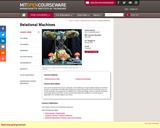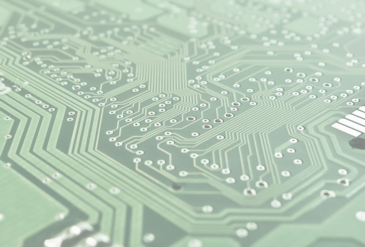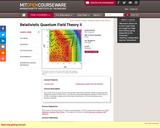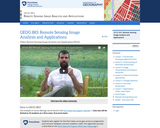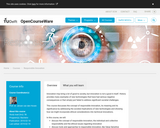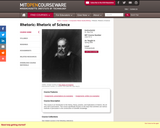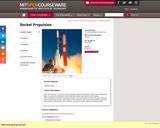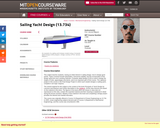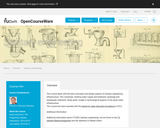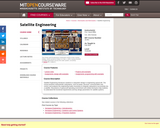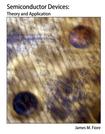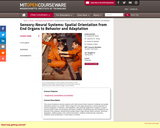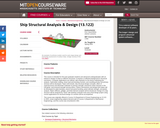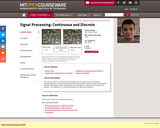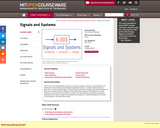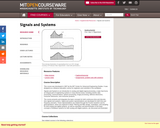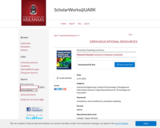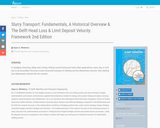Discrete-event simulation is an important tool for the modeling of complex systems. Simulation is used to represent manufacturing, transportation, and service systems in a computer program to perform experiments on a computer. Simulation modeling involves elements of system modeling, computer programming, probability and statistics, and engineering design. Simulation Modeling and Arena, by Dr. Manuel Rossetti, is an introductory textbook for a first course in discrete-event simulation modeling and analysis for upper-level undergraduate students as well as entering graduate students. The text is focused on engineering students (primarily industrial engineering); however, the text is also appropriate for advanced business majors, computer science majors, and other disciplines where simulation is practiced. Practitioners interested in learning simulation and Arena could also use this book independently of a course.
This book was created in Markdown and is available through GitHub. By cloning the repository or downloading the zip archive, you can have a local copy of the entire book. Thus, if you do not have regular access to internet services, you can still read and utilize the materials. The author encourages students within a class setting to clone the repository using a program such as Github desktop.
Table of Contents:
1 Simulation Modeling
1.1 Simulation Modeling
1.2 Why Simulate?
1.3 Types of Systems and Simulation Models
1.4 Simulation: Descriptive or Prescriptive Modeling?
1.5 Randomness in Simulation
1.6 Simulation Languages
1.7 Simulation Methodology
1.8 Organization of the Book
1.9 Exercises
2 Introduction to Simulation and Arena
2.1 The Arena Environment
2.2 Performing Simple Monte-Carlo Simulations using Arena
2.3 How the Discrete-Event Clock Works
2.4 Simulating a Queueing System By Hand
2.5 Elements of Process-Oriented Simulation
2.6 Modeling a Simple Discrete-Event Dynamic System
2.7 Extending the Drive Through Pharmacy Model
2.8 Animating the Drive Through Pharmacy Model
2.9 Attributes, Variables, and Some I/O
2.10 How Arena Manages Entities and Events
2.11 Summary
2.12 Exercises
3 Statistical Analysis for Finite Horizon Simulation Models
3.1 Finite versus Infinite Horizon Simulation Studies
3.2 Types of Statistical Quantities in Simulation
3.3 Review of Statistical Concepts
3.4 Modeling a STEM Career Mixer
3.5 Using Sequential Sampling Methods on a Finite Horizon Simulation
3.6 Tabulating Frequencies using the STATISTIC Module
3.7 Summary
3.8 Exercises
4 Modeling Systems with Processes and Basic Entity Flow
4.1 Enhancing the STEM Career Mixer Example
4.2 Example: Iterative Looping, Expressions, and Sub-models
4.3 Batching and Separating Entities
4.4 Statistical Issues When Comparing Two Systems
4.5 The LOTR Makers, Inc. Example
4.6 Comparing Two Alternative Configurations for the LOTR Makers
4.7 Modeling Systems with Routing Sequences
4.8 Summary
4.9 Exercises
5 Statistical Analysis for Infinite Horizon Simulation Models
5.1 A Spreadsheet Example
5.2 Statistical Analysis Techniques for Warmup Detection
5.3 Performing the Method of Replication-Deletion
5.4 The Batch Means Method
5.5 Applying Queueing Theory Results to Verify and Validate a Simulation
5.6 Summary
5.7 Exercises
6 Modeling Systems with Advanced Process Concepts
6.1 Non-stationary Processes
6.2 Advanced Resource Modeling
6.3 Job Fair Example with Non-Stationary Arrivals
6.4 Modeling Balking and Reneging
6.5 Holding and Signaling Entities
6.6 Miscellaneous Modeling Concepts
6.7 Summary
6.8 Exercises
7 Modeling Systems with Entity Movement and Material Handling Constructs
7.1 Resource Constrained Transfer
7.2 Constrained Transfer with Transporters
7.3 Modeling Systems with Conveyors
7.4 Modeling Guided Path Transporters
7.5 Summary
7.6 Exercises
8 Applications of Simulation Modeling
8.1 Analyzing Multiple Systems
8.2 SM Testing Contest Problem Description
8.3 Answering the Basic Modeling Questions
8.4 Detailed Modeling
8.5 Simulation Horizon and Run Parameters
8.6 Preliminary Experimental Analysis
8.7 Final Experimental Analysis and Results
8.8 Completing the Project
8.9 Some Final Thoughts
8.10 Exercises
Appendix
A Generating Pseudo-Random Numbers and Random Variates
A.1 Pseudo Random Numbers
A.2 Generating Random Variates from Distributions
A.3 Summary
A.4 Exercises
B Probability Distribution Modeling
B.1 Random Variables and Probability Distributions
B.2 Modeling with Discrete Distributions
B.3 Fitting Discrete Distributions
B.4 Modeling with Continuous Distributions
B.5 Fitting Continuous Distributions
B.6 Testing Uniform (0,1) Pseudo-Random Numbers
B.7 Additional Distribution Modeling Concepts
B.8 Summary
B.9 Exercises
C Queueing Theory
C.1 Single Line Queueing Stations
C.2 Examples and Applications of Queueing Analysis
C.3 Non-Markovian Queues and Approximations
C.4 Summary of Queueing Formulas
C.5 Exercises
D Miscellaneous Topics in Arena
D.1 Getting Help in Arena
D.2 SIMAN and the Run Controller
D.3 Programming Concepts within Arena
D.4 Resource and Entity Costing
D.5 Summary
E Arena Operators, Functions, Distributions, and Modules
E.1 Arena Mathematical and Logical Operators
E.2 Arena Probability Distributions Functions
E.3 Basic Process Panel Modules
E.4 Advanced Process Panel Modules
E.5 Advanced Transfer Panel Modules
E.6 Important SIMAN Blocks, Elements, and Pre-Defined Attributes and Variables
F Distributions
F.1 Discrete Distributions
F.2 Continuous Distributions
G Statistical Tables
